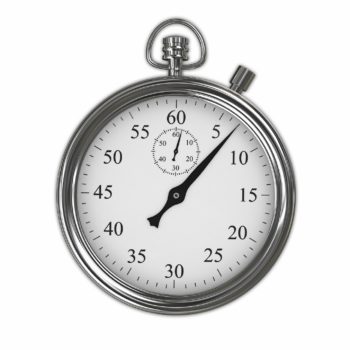Why Your Viewability Percentage Doesn't Matter
by Lindsay Rowntree on 6th Jul 2018 in News

The topic of viewability in programmatic has been discussed ad nauseam in recent years, so why, you might ask, do we need another article on this subject? Writing exclusively for ExchangeWire, Joey Henderson, commercial director, Avocet, explains why the conversation needs to continue, but that it shouldn't be about viewability percentages.
I believe that, unfortunately, for much of that time we’ve been focusing on the wrong type of viewability measurement.
While countless media dollars and development hours have been spent on measuring, targeting, and optimising to view percentage we, as an industry, have ignored a much more important metric – view duration.
So, why is view duration more important than view percentage?
Moving goalposts
The first issue with percentage-based measurement stems from the fact that it is predicated on a singular definition of viewability which, for most, means the MRC/IAB standard of 50% of pixels for one second.
If we’re all really honest with ourselves, we can probably agree that seeing half of an MPU for one second is not a hugely engaging or influential experience. Major agencies and brands, such as GroupM and Unilever, are increasingly realising this and consequently pushing their own custom viewability standards, demanding more pixels and more time in-view.
As brands and agencies continue to shift the goalposts, media buyers and sellers need to look at new solutions to keep up with these increasingly customised demands.
A binary view of the world
However, even if we move to a higher standard, 100% for two seconds, for example, we still have the issue that a percentage-based measurement is completely binary – viewable and non-viewable are black and white.
Applying this binary principle to the MRC/IAB standard, and assuming our core KPI is a viewability percentage goal, we state that an impression viewed for 1.001 seconds is worth something and an impression viewed for 0.999 seconds is worth nothing, even though the difference is arguably imperceptible to the user.
In addition, we also value an impression that’s viewed for one second and an impression that’s viewed for five seconds equally, even though the latter is much more valuable from an engagement and awareness perspective.
A new standard
So, how does a model based on view duration help tackle these issues?
Firstly, it focuses on the most important metric for engagement and awareness – exposure time. Unsurprisingly, studies show that the more time a user is exposed to a particular ad campaign, the higher their recall will be and the higher their likelihood of engagement, in the form of a click or a conversion. So, it’s a wonder that more people aren’t working to maximise this metric already…
By shifting KPIs to an 'average view duration' or 'cost per second', brands are given the flexibility they desire to set their own standards and buyers can spend more efficiently by assigning appropriate values to different impressions based on their view duration.
This tackles the customisation and binary measurement issues in one fell swoop, whilst also putting us in the position to optimise to awareness in a way that hasn’t been done before.
New ways of thinking
Moving away from view percentage and towards view duration represents a major paradigm shift for the industry. Although it may be difficult at first, when we free ourselves from the incumbent models, it actually opens up some very exciting opportunities.
Cost per second, which some publishers have already adopted as a pricing model, provides a unique opportunity to dial in exactly how much we want to pay for a single engagement, while still ensuring brands only pay for what is actually viewed.
In addition, frequency capping can be adapted to be duration based. At present, people will gladly serve five ads to a user in a 24hr period, knowing full well that some will not be seen. However, if we can frequency cap based on duration, you could stop serving if the first two ads amounted to 15 seconds in-view, thus greatly increasing buying efficiency.
In a sign of things to come, many of the leading ad verification partners are already providing reporting on view duration metrics. It is now up to the buyers to enable targeting and optimisation against these metrics and for agencies and brands to re-evaluate how they think about viewability and engagement – a rapidly growing trend that looks set to continue.








Follow ExchangeWire